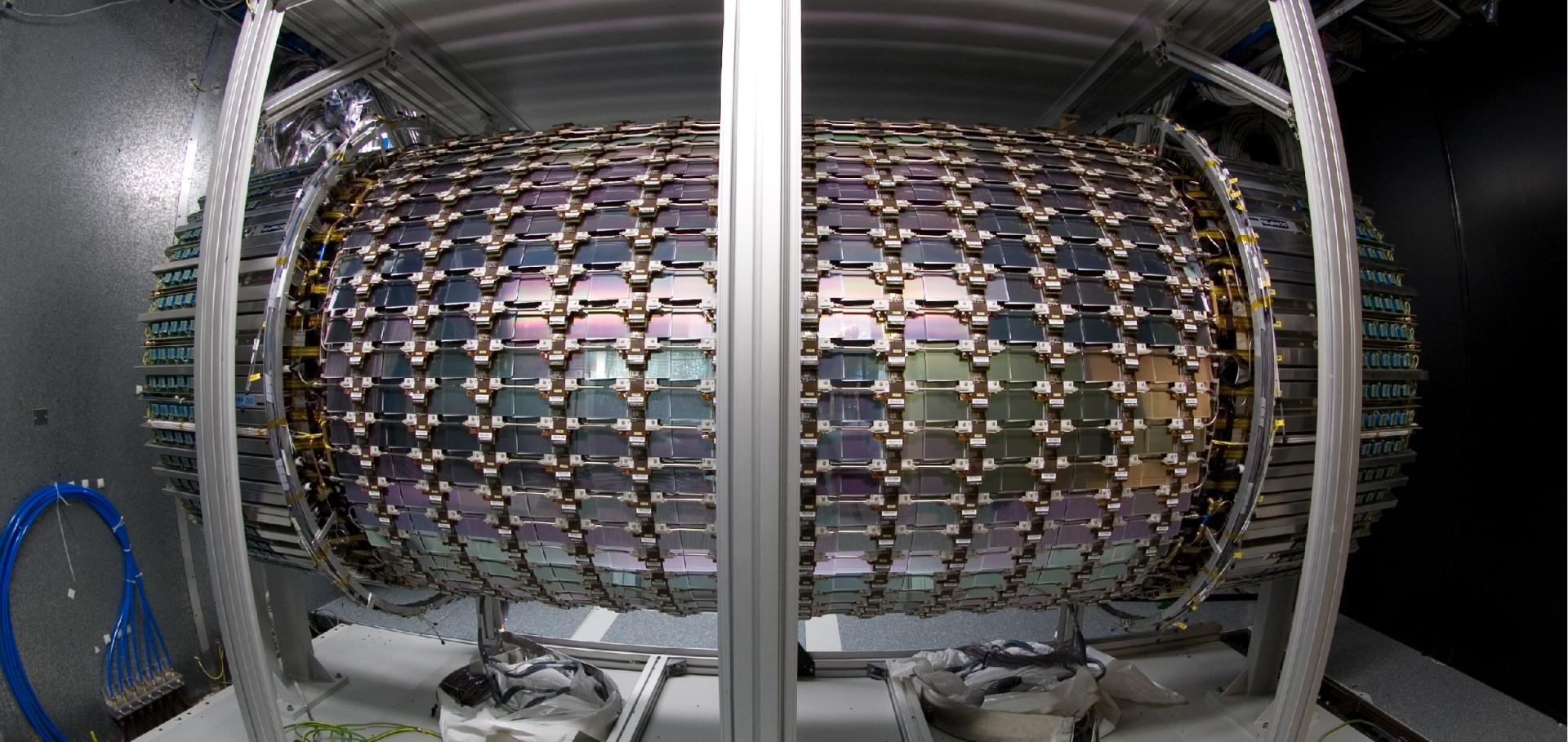Search for quark contact interactions in dijet angular distributions in pp collisions at s=7 TeV measured with the ATLAS detector
Physics Letters, Section B: Nuclear, Elementary Particle and High-Energy Physics 694:4-5 (2011) 327-345
Abstract:
Dijet angular distributions from the first LHC pp collisions at center-of-mass energy s=7 TeV have been measured with the ATLAS detector. The dataset used for this analysis represents an integrated luminosity of 3.1 pb-1. Dijet Χ distributions and centrality ratios have been measured up to dijet masses of 2.8 TeV, and found to be in good agreement with Standard Model predictions. Analysis of the λ distributions excludes quark contact interactions with a compositeness scale Χ below 3.4 TeV, at 95% confidence level, significantly exceeding previous limits. © 2010 CERN.A search for new physics in dijet mass and angular distributions in ppcollisions at √s=7 TeV measured with the ATLAS detector
New Journal of Physics 13 (2011)
Abstract:
A search for new interactions and resonances produced in LHC proton-proton (pp) collisions at a centre-of-mass energy √s = 7 TeV was performed with the ATLAS detector. Using a dataset with an integrated luminosity of 36 pb -1, dijet mass and angular distributions were measured up to dijet masses of ∼3.5TeV and were found to be in good agreement with Standard Model predictions. This analysis sets limits at 95% CL on various models for new physics: an excited quark is excluded for mass between 0.60 and 2.64 TeV, an axigluon hypothesis is excluded for axigluon masses between 0.60 and 2.10 TeV and quantum black holes are excluded in models with six extra space-time dimensions for quantum gravity scales between 0.75 and 3.67 TeV. Production cross section limits as a function of dijet mass are set using a simplified Gaussian signal model to facilitate comparisons with other hypotheses. Analysis of the dijet angular distribution using a novel technique simultaneously employing the dijet mass excludes quark contact interactions with a compositeness scale A below 9.5 TeV. © 2011 CERN for the benefit of the ATLAS Collaboration.Link model simulation and power penalty specification of the versatile link systems
Journal of Instrumentation IOP Publishing 6:01 (2011) c01088-c01088
Search for heavy long-lived charged particles with the ATLAS detector in pp collisions at √s=7 TeV
Physics Letters, Section B: Nuclear, Elementary Particle and High-Energy Physics 703:4 (2011) 428-446
Abstract:
A search for long-lived charged particles reaching the muon spectrometer is performed using a data sample of 37 pb-1 from pp collisions at √s=7 TeV collected by the ATLAS detector at the LHC in 2010. No excess is observed above the estimated background. Stable τ̃ sleptons are excluded at 95% CL up to a mass of 136 GeV, in GMSB models with N5=3, mmessenger=250 TeV, sign(μ)=1 and tanβ=5. Electroweak production of sleptons is excluded up to a mass of 110 GeV. Gluino R-hadrons in a generic interaction model are excluded up to masses of 530 GeV to 544 GeV depending on the fraction of R-hadrons produced as g̃-balls. © 2011 CERN.Search for supersymmetry in pp collisions at √s=7 TeV in final states with missing transverse momentum and b-jets
Physics Letters, Section B: Nuclear, Elementary Particle and High-Energy Physics 701:4 (2011) 398-416


